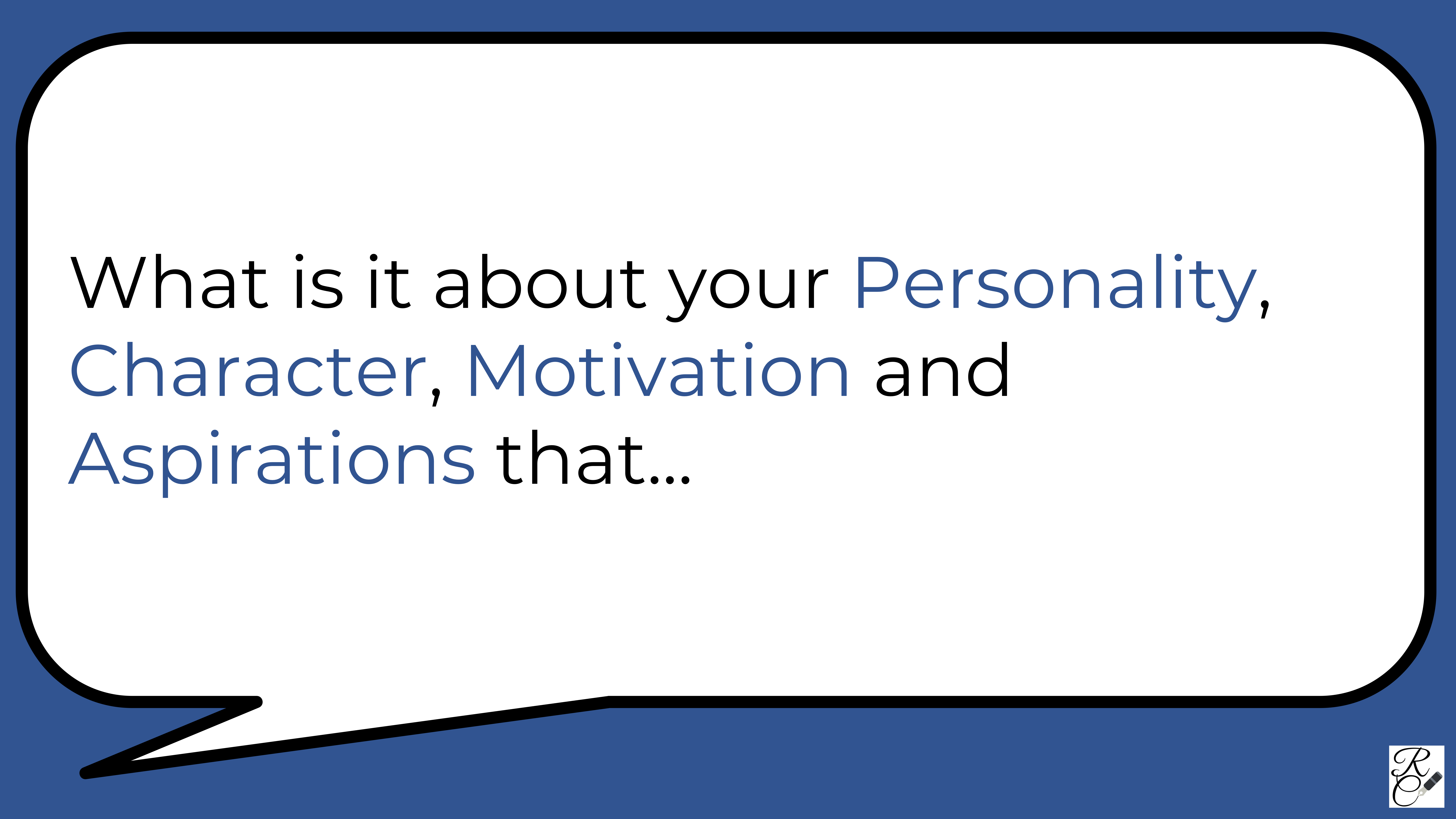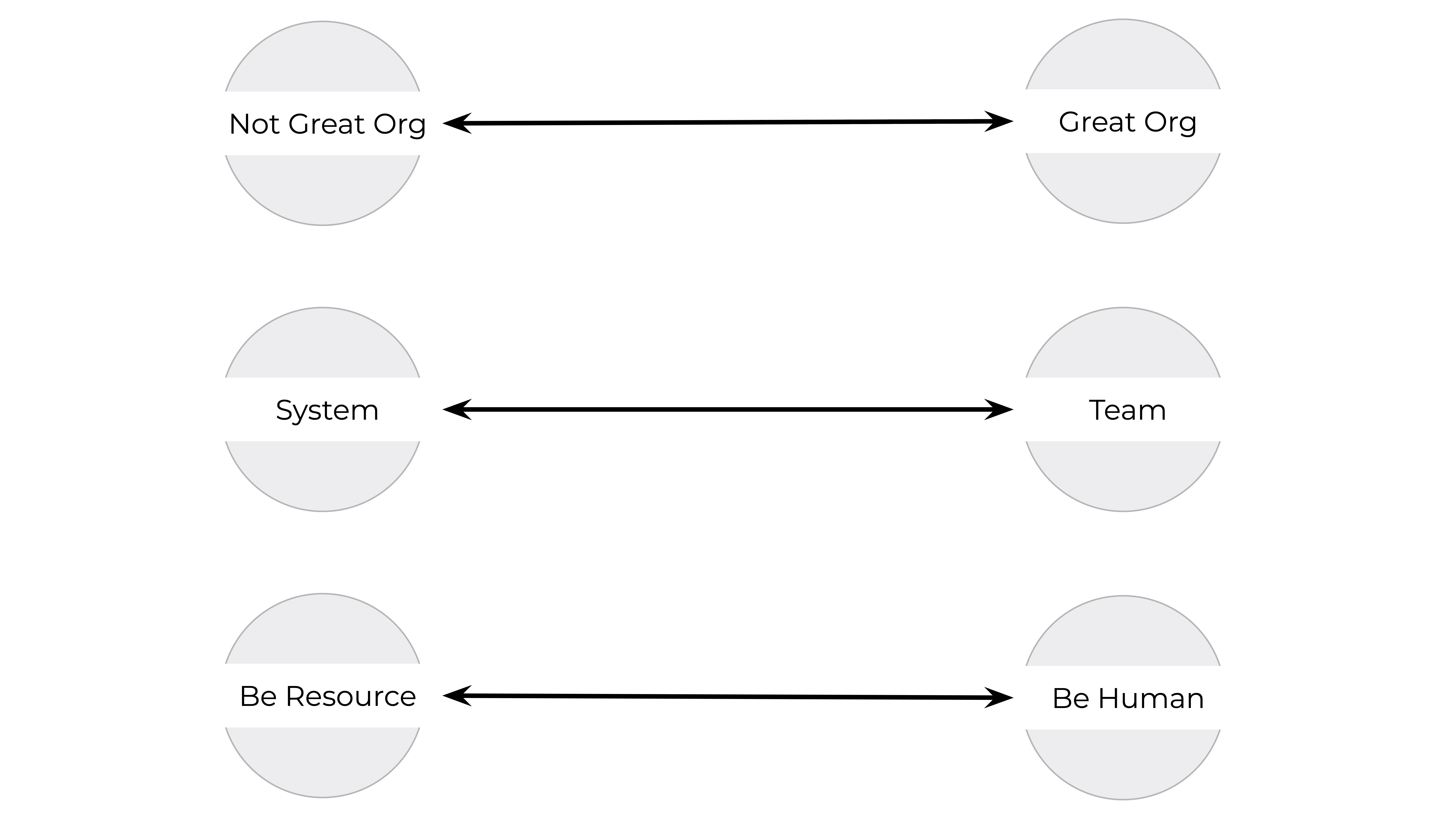
Photo by Tim Mossholder on Unsplash.
An employee barters his or her skills, knowledge, experience, and contribution in exchange for compensation from an employer. [1]
There is knowledge to be gained by defining words. Isn't that fascinating? Take a moment to think about the notion.
We utilize and consume words all the time - verbal, written, audio, reading, video, etc. What do they really mean? What differentiates their meaning? In almost every one of my posts, I have anchored ideas upon definitions. This post is no different.
Comprehending what is an employee makes sense of the workplace and improves one's career.
People Are The Company, the Deliverers of Value

Photo by Johnathan Macedo on Unsplash.
The employee is an integral part of an organization. In a 2021 interview with FranklinCovey, renowned organizational psychologist, academician and author, Adam Grant, was quoted as saying, "great organizations become that way because they don't believe that people are the most important resource in their company; they believe that people are their company." [2] Likewise, Nando Steenhuis of the Academy to Innovate HR offers, "here's what I say when anyone asks me for business advice: People are the single most important business success factor." [3] Many more quotes would prove the point.
How interesting a twist on the tried and true declaration. Employees are our most valuable resource. Just how many companies and managers say that? As I implied from the outset, words matter.
The Company, The Collective and Its Division
So if you The Employee are the company, then what you do is directly representative of the organization. What you know is, too. “The collective learning in the organization, especially how to coordinate diverse production skills and integrate multiple streams of technologies,” is what noted academicians and authors, C.K. Prahalad and Gary Hamel, called the organization’s core competencies. “…It is also," they wrote, "about the organization of work and the delivery of value.” [4]
With our definition of employee in mind, every one of them apportions skills, knowledge, experience and contribution toward that collective learning. The same goes for company leaders and managers. That's the collective.
Only, there are remainders to the division of the collective.
Do you remember division from elementary school Math class? It’s what’s left over after the dividing is completed. Ex. 9/7 = 1R2 = 7 goes into 9 once with 2 remaining. Let's pause from division for the moment to switch to addition. (No, there will not be a Math quiz at the end of this blogpost...)
If core competencies are the collective learning of the organization, then the division of the collective is its breakdown back into working parts. Importantly, the breakdown of core competencies adds up to more than 100%.
How is this possible those elementary mathematics experts might ask? There are two reasons.
First, expertise is but one facet of The Employee's contribution to the organization. All employees offer more than their job description entails. That means latent competencies, promise and potential.
Second, the sum of the collective learning of the organization has a degree of freedom, that being synergy or the conceivable lack of it. This comes from the concept that "a system is more than the sum of its parts," [5] i.e. more than 100%. Focusing on more than the sum of its parts, "in a calculation, degrees of freedom is the number of values which are free to vary." [6] When that level of synergy is rendered like fat from a marbled steak, the remainder, or surplus, gets exposed. And, as with that once marbled steak, the remainder adds a lot of character to the source.
Core competencies are the collective learning in the organization, especially how to coordinate diverse production skills and integrate multiple streams of technologies.…It is also about the organization of work and the delivery of value. [4]
Think about when employees go to their workstations, desks or assignments. On paper, employees do their job, the organization collectively performs, and value results. Dynamics (i.e. synergy or the conceivable lack of it) occur throughout. This is when job descriptions give way to reality. Examples may include office politics, collaboration, employee 'chemistry', surprises, uncontrollable events, individual conflicts, unforeseen opportunities, market shifts, and more.
I'll define here the remainder to the division of the collective. It is
A naturally-occurring leftover of organization design that affects process development and adjustments to execution;
The unrefined perspective, or supposition, that exists
On account of autonomy;
Decision-making, and
In the cracks of the organization's core competencies.
Each employee's trivial and (past) experiential knowledge resulting in
Tethered assumptions (of scenarios, of empirical observations, etc.), and,
The individual's personal ambition.
Remainder to the division of the collective plays a role in hierarchical perspective - and it allows for cause to distinguish between employees’ status as resources and people's standing as the company itself. Let's learn how remainder to the division of the collective plays a direct role in how definitions give way to perspective.
Resources: A Perspective
In the context of business and economics, a resource is any factor that’s necessary to accomplish a goal or carry out an activity. In short, they are the components that a business needs in order to do business. [7]

Photo by Clay Banks on Unsplash.
In my last post, Systems vs. Teams, I wrote, "Why does it matter if you as an employee work as part of a system or a team? In which entity you find yourself a part is the critical factor for how you perform. And where you land gives you the topography of perspective."
The topography of perspective was to be taken as imagery for the following:
Vertical and horizontal hierarchy;
Clearings and obstacles of cross-functional knowledge and information flow;
Organizational heights from which one can comprehend how the organization functions holistically.
Think about it. One's position in an organization largely determines access to information providers and stocks of what information they have to share. That's because an organization's design, in part, defines or is engineered to control information according to strategic need.
It is therefore motive for an organization's leadership--from its topography of perspective--to perceive employees at least in part as resources.
Why? I'll give three reasons.
3 Reasons To View Employees As Resources
First: Organizations Are Complex
"Everything we think we know about the world is a model. Our models do have a strong congruence with the world. Our models fall far short of representing the real world fully." [5]
In other words, we have to make sense of complexity. Somehow.
Leadership and management must somehow consume entire organizations' activities to gauge its real-time health, direction and so on. The larger the organization, the wider the perspective one must take. So many individuals' activities become the organization's lone activity. Aggregating the behavior and outcomes of resources, then, is fair game when modeling the organization for review.
Second: Employees Facilitate Operations
"In the context of business and economics, a resource is any factor that’s necessary to accomplish a goal or carry out an activity. In short, they are the components that a business needs in order to do business." [7]
The organization itself is a system.
From Systems vs. Teams, "being a part of or utilizing a system has to do with strategic facilitation, representing organization design, solving problems and the problem(s) to be solved." In this way of seeing employees as resources, I like the word facilitation.
Facilitating operations is effectively synonymous with business processes. From the University of Maryland's University Process Innovation initiative, "Processes are the means by which work gets done and how value is delivered. They are the fundamental entities that drive progress and are critical to the success of an organization....Business processes must be understood and properly managed in order to be effectively executed." [8] In order to operate a system, operations must happen. That's logical, right? So unless the business is a sole proprietor with a 100% automated value delivery system, employees are facilitators, resources.
Third: Operating Over Time Is Bigger Than Just One Person
"...System behavior reveals itself as a series of events over time." [5]
Related to the first point about modeling, activities over time is a dimensional perspective.

Photo by Lukas Blazek on Unsplash.
Leadership and management have broader purview of the organization. They forecast, keep tabs on the market and competitors' past performance, identify risks to success, assess workforce strategy, and much, much more. The keys to the aforementioned are performance over time, and information from internal and external sources. Leadership and management have an ability to observe and guide the organization according to system feedback. A generic example, how are we doing as a whole given what has happened?
In this way, employees' individual personalities, characters, motivations and aspirations are too itemized to consider. John or Jane Doe's bad day is not going to have much impact on a 100,000-person organization. A great day won't either. Neither case would likely impact even a 100-person organization. The system still functions. It's more resilient than a single individual. Even CEOs get fired and resign. The organization goes on.
The organization's inertia encompasses everyone in it, which means individuals may be expressed as resources amid the whole.
Employees Are People
Above are three reasons why employees are resources, altogether components that a business needs in order to do business. So are people just plug-and-play, swappable?
No.
I have hopefully explained. Perspective is what advocates employees as organizational resources. It's not a personal way of thinking - it's nothing personal. Employees are human beings after all. At scale, though, perspective is sense-making of the entirety and the organization's activities over time.
Business is business.
When it comes to employees being the company, however, perspective must give way to definition.
In other words, employees are resources for the organization and yet at the end of the day, employees are people, first.

Photo by Jason Goodman on Unsplash.
People are people.
It is not by coincidence that the definition of employment is predicated upon being human: "the condition of having paid work; a person's trade or profession; the action of giving work to someone." [9] I read the words 'person' and 'someone'.
People are not robots.
Organizations hire people to fulfill their business models to utilize systems of infrastructure, process and procedure, technology, etc., NOT the other way around. No business purchases laptop computers, desks or manufacturing machinery with the absolute intent of hiring people to use them. We need a building so we can fill it does not occur to any business owner or manager. 'Cart before the horse. There must be need for those systems and components. The employees' use of them now and/or in the future spurs the need to invest.
"...employees are resources for the organization and yet at the end of the day, employees are people, first."
Employees are people. Employees barter skills, knowledge, experience, and contribution in exchange for compensation from an employer.
Employees are the company.
3 Reasons Why Employees Are the Company
Number 1: Sentience
"Each person has a unique, living, breathing set of capabilities. Those capabilities belong to the individual, who decides where to put them to work." [10]
I explained in Systems vs. Teams that "The notion of interchangeability belies their, the individuals', design to cooperate. When would-be team members become system cogs, there's a dehumanizing effect." Organizations rely on their people to make decisions, interpret, assess, analyze, sense, observe, collaborate and many other cognitively-based, participative activities.
Considering employees as simply resources robs their humanity. Perspective, to the extent of magnitude of information to model complexity is fair game. Treatment insofar as colorless uniformity and homogeneity is grossly ignorant, lazy and unkind. Ironically, it requires compassion to behave like a human.
Number 2: Teams of People Cooperate
I found a superb article written by Jeff Haden, 8 Qualities of Remarkable Employees. Before I get to the article, though, the source matters.
The publication, Inc.'s, target audience is very likely those involved and interested in startups, small businesses, and growth-minded firms. Comparatively so, those who read Inc.'s content may be of a different mindset, i.e. the large corporation, or "the corporate world" employees.
I have worked in small businesses, fast-growth companies, and large, publicly-traded corporations. With that, I believe Haden's is a thoughtful accounting of employee excellence no matter the organization's size.
He starts off the eight qualities of remarkable employees with a home run notion: "they ignore job descriptions." This is not to say forgo responsibilities or do others' jobs or overstep one's boundaries or distrust colleagues' abilities, etc. Haden justifies the concept. "Remarkable employees know without being told there's a problem and they jump in without being asked." [11] That's the opposite of That's not my job.
Why does this matter?
Adam Grant, who was quoted earlier, has also said, "...success is really more about contribution. I believe the most meaningful way to succeed is to help other people succeed." [12] In other words, teams of people cooperate when surprises happen, when a coworker's child is sick, when a client changes its mind, and so forth. The definition of resources--any factor that’s necessary to accomplish a goal or carry out an activity--cannot account for such cooperative contribution unless that factor is a person. That goes for small and large companies.
Number 3: Personal Ambition
Source: Rehr Consulting.
In a previous post, Scaling-Up Personal Ambition, I wrote: "Think about it. Can you stop being who you are? Tough ask, right? So personal ambition is actually one's personal strategy for achieving one's basis for existence - doing things that satisfy one's personality, character, motivation and aspirations."
We all have personal ambition. That means every employee in every company. And that means staff all the way up to the CEO.
Robert E. Quinn and Anjan V. Thakor wrote in the July-August 2018 edition of Harvard Business Review, "A higher purpose is not about economic exchanges. It reflects something more aspirational. It explains how the people involved with an organization are making a difference, gives them a sense of meaning, and draws their support." [13] I like that last phrase, "draws their support." It's followership, a matching of values, assumptions, beliefs and expectations to one's own personal ambition and even that of the organization.
If sentience is humanity and teams of (sentient) people cooperate, then personal ambition ties the two together to form the basis of what I believe Jeff Haden considered the 'remarkable employee'.
"Ironically, it requires compassion to behave like a human."
Passing someone off as a mere resource revokes personal ambition. Labeling one as a resource disallows that person to have the full capacity of his or her personality, character, motivation and aspirations. There's a taking of power for the taker's purpose, whatever that might be.
Employees aren't resources. They're precious resources, and that's why employees are the company.
Balancing Perspective: Precious Resources
Whenever I travel anywhere, my grandmother has always told me beforehand, "tell the pilot to drive carefully with precious cargo." I am to her precious cargo - that's perspective and definition. Determining how precious are the resources in an organization comes down to both perspective and definition, too.
Paul B. Lester, et al. conducted research that included nearly 1,000,000 U.S. Army soldiers over a span of 5 years. They concluded. "Clearly, our military study shows that organizations should want happy employees, because they perform significantly better than those who are unhappy. But it turns out that organizations also need happy employees, because happiness is in fact contagious." [14]
Ultimately, organization leaders, managers and staffers, alike, must decide whether to work for a great organization or not; the degree to which employees operate or cooperate, respectively, in systems or teams; and whether or how employees perceive others and themselves as either resources or other human beings.
Given our precious resources, these three tensions speak to the importance of the decisions' outcomes.
Just as important, though, is the honesty through which the decisions are made. For example, I cannot think of anyone who would want to lead, manage or work for a lousy organization. That's unthinkable. Beyond belief, then, we've seen monstrosities in business ethics (e.g. Enron), and greed (e.g. mortgage lenders) that have gone so far as to bring the global economy to its knees.
The decision about precious resources comes down to real-time decision-making with authenticity, genuineness, vision, consideration, humility and more - on a moment-to-moment basis.
No, this is not an ideal. It's possible. For example, in 2019 the Business Roundtable "adopted a new Statement on the Purpose of a Corporation declaring that companies should deliver long-term value to all of their stakeholders – customers, employees, suppliers, the communities in which they operate, and shareholders." [15] Almost 200 preeminent CEOs publicly signed on to show their support.
Such commitment is indicative of 2 effects that I've described - 1) the degree of freedom of core competencies, and 2) the positive or negative effect I called the remainder to the division of the collective. 
Download this graphic here.
Every organization has internal tensions born of ongoing decisions to conduct itself in a certain manner. Without need to argue the obvious, there is no 'right' way for all organizations to be. Ongoing decisions can be whittled down to 3 tensions - those that together represent the cracks of the organization's core competencies, i.e. the ebb and flow of conducting business through employees' skills, knowledge, experience, and contribution.
The 3 Tensions
The barter of The Employee is not a swap. It's a series of tensions to be constantly balanced - by and for leaders, management and staffers, alike. Self-leadership is everyone's responsibility.
"The decision about precious resources comes down to real-time decision-making with authenticity, genuineness, vision, consideration, humility and more - on a moment-to-moment basis."
Is the organization motivated and does it aspire to be great or not?
What defines the personality of the organization--cogs in systems or participative people?
To what degree is the organization's working character defined, an operation (i.e. valued resource) or cooperation (i.e. agency).
There is much more that could be said and written about these 3 tensions. It would be more productive to move the idea forward if I were to leave inspired reactions and ideas to you, my reader. How do you feel about being The Employee, no matter your organizational rank and given those tensions?
Resource or People? How Perspective Can Form
The extreme case of a not-great organization warrants some advice. Far be it for me to offer that advice when there is someone with research and more experience to provide that guidance.
Bob Sutton has written several books, conducted research, and taught hundreds of graduate and doctoral-level business students at the Stanford Graduate School of Business. At the end of a 2014 talk (that can be found on YouTube; timestamped for convenience) he had this to say (transcribed):
"So if you are in an organization that really sucks and you're a low-level person, to me, you've got three choices.
"One, you get out as fast as you can, because you're going to start becoming like those jerks and incompetent people you work with. It's very contagious.
"The second thing you can do is to form a posse of people. Don't just fight The Man or Woman yourself, because [there is] a lot of evidence that when you try to be an individual deviant, they just label you. So form a group of people and that sort of political action.
"And then the third thing and this is I think a temporary solution...suck it up, to use that term, and just get through it and learn the fine art of emotional detachment.
"Sometimes life is like a bad airplane ride....We've all had the bad airplane ride, you know, like you get bumped. I had this about three weeks ago. I'm in the last row, middle seat by the bathrooms in the giant plane and I'm a big guy, but the two guys on either side of me are at least 50 pounds each heavier than me. So I shut my eyes ordered a double bourbon and imagined I was somewhere else and tried not to give a shit.
"Sometimes your job is like that. And it's not a good permanent solution, because I would still be drunk and on that airplane, right? But sometimes it's just sort of like the fine art of knowing when not to give a shit is a really good technique, but get out as fast as you can is my quick advice." [16]
"...organizations also need happy employees, because happiness is in fact contagious." [14]
I must admit. I laughed as I heard Sutton's story about the plane ride. However, what if the plane ride doesn't end. For humor, Sutton said he would still be drunk and on that airplane. In reality, our job doesn't end - because of fear, bills, pride and dedication, other responsibilities, and more.
A perspective forms...
The Imperative of The Employee
To paraphrase what's been told to me over the years, work is called work because it is; otherwise, they'd call it fun.
I disagree. Wholeheartedly.
In the workplace, perspective and definition are constantly at odds unless they're not. Every organization has wiggle room, even when it seems they don't. That degree of freedom can be a blessing or a curse. It is higher-order, conscientious and perpetual decision-making that balances what dictates a good organization, well-adjusted systems and teams, and coolheaded application of the label, resource. Those are the choices every employee must make for others and for themselves.
Work is a space or place that makes utilization of one's personal ambition to meet his or her promise and potential, in whatever way that promise and potential may elicit results. If this is not the case for you, then rethink your career in terms of your personal ambition.
The Employee is by definition someone who barters skills, knowledge, experience, and contribution, and by perspective, components that a business needs in order to do business.
[1] Heathfield, Susan M. "What, Exactly, Is An Employee?". the balance careers | Human Resources | Work/Life Balance, 2021, https://www.thebalancecareers.com/what-is-an-employee-1918111. Accessed 25 June 2022.
[2] FranklinCovey. Think Again: Adam Grant. 2021, https://youtu.be/CbqqIYTHuwM. Accessed 24 June 2022.
[3] Academy to Innovate HR. Email newsletter, "My Business Advice For You". 2022.
[4] Prahalad, C.K., and Gary Hamel. "The Core Competence Of The Organization". Harvard Business Review, 1990, https://hbr.org/1990/05/the-core-competence-of-the-corporation. Accessed 25 June 2022.
[5] Meadows, Donella H., and Diana Wright. Thinking in Systems: A Primer. Chelsea Green Publishing, 2008, pp. 2, 87, 188.
[6] The University of Texas at Austin. "Degrees Of Freedom". University Of Texas | Statistics Online Support, http://sites.utexas.edu/sos/degreesfreedom/. Accessed 5 July 2022.
[7] University of Arkansas Grantham. "A Guide To Organizational Resources And How To Manage Them". University Of Arkansas Grantham | Blog, 2019, https://www.uagrantham.edu/blog/a-guide-to-organizational-resources-and-how-to-manage-them/. Accessed 25 June 2022.
[8] University of Maryland Division of Information Technology. University Process Innovation Framework For Process Analysis. University Of Maryland, 2016, https://it.umd.edu/sites/default/files/UPI/UPI-Framework_090116.pdf, Accessed 30 June 2022.
[9] "Employment". Apple Dictionary. Apple, Inc., Accessed 2 July 2022.
[10] Madgavkar, Anu et al. Human Capital At Work: The Value Of Experience. McKinsey Global Institute, Washington, DC, 2022, https://www.mckinsey.com/business-functions/people-and-organizational-performance/our-insights/human-capital-at-work-the-value-of-experience. Accessed 2 July 2022.
[11] Haden, Jeff. "8 Qualities Of Remarkable Employees". Inc. | Innovate, 2012, https://www.inc.com/jeff-haden/the-8-qualities-of-remarkable-employees.html. Accessed 2 July 2022.
[12] TED. Are You A Giver Or A Taker? | Adam Grant. 2017, https://youtu.be/YyXRYgjQXX0. Accessed 25 June 2022.
[13] Quinn, Robert E., and Anjan V. Thakor. "Creating A Purpose-Driven Organization". Harvard Business Review, 2018, https://hbr.org/2018/07/creating-a-purpose-driven-organization. Accessed 2 July 2022.
[14] Lester, Paul B. et al. "Top Performers Have A Superpower: Happiness". MIT Sloan Management Review, 2022, https://sloanreview.mit.edu/article/top-performers-have-a-superpower-happiness/. Accessed 7 July 2022.
[15] Business Roundtable. "Purpose Of A Corporation Anniversary". businessroundtable.org, 2021, https://www.businessroundtable.org/purposeanniversary. Accessed 7 July 2022.
[16] Stanford University | School of Engineering | Stanford Technology Ventures Program. Bob Sutton: Scaling Up Excellence [Entire Talk]. 2014, https://youtu.be/R1WG_u0o9JM. Accessed 25 June 2022.
